TOCPythonLanguageCode LineCode BlockFunctionsCommon PackagesResource and LinkKnowledge BaseHow ToFAQ
LiteralString LiteralBytes LiteralInteger, Floating Point Number, Imaginary LiteralsBoolean, None LiteralsList, Tuple, Dictionary, Set, Frozenset Literals
Draft for Information Only
Content
Python String Literal
Definition of Python String Literal
Features of Python String
Python String Notation
Python String Catalogue
Python String Prefix
Python Source Characters
Escape Sequences Characters
Python Unicode Literial
Source and Reference
Python String Literal
A string is a sequence of characters. In other words, a string is basically a bunch of words and/or symbols. Although byte literal is one type of string literal in Python, the literal value of a byte literal is always considered as byte sequences or byte arrays.Definition of Python String Literal
A string literal is a sequence of characters from any source characters.stringliteral::=[stringprefix](shortstring | longstring)
stringprefix::="r" | "u" | "R" | "U" | "f" | "F" | "fr" | "Fr" | "fR" | "FR" | "rf" | "rF" | "Rf" | "RF"
shortstring::="'" shortstringitem* "'" | '"' shortstringitem* '"'
longstring::="'''" longstringitem* "'''" | '"""' longstringitem* '"""'
shortstringitem::=shortstringchar | stringescapeseq
longstringitem::=longstringchar | stringescapeseq
shortstringchar::=<any source character except "\" or newline or the quote>
longstringchar::=<any source character except "\">
stringescapeseq::="\" <any source character>
Features of Python String
The Python string of string literal in Python have some typical features.Python String Notation
A Python string is denoted by quotes. The ways to denote a Python string are. Single Quotes,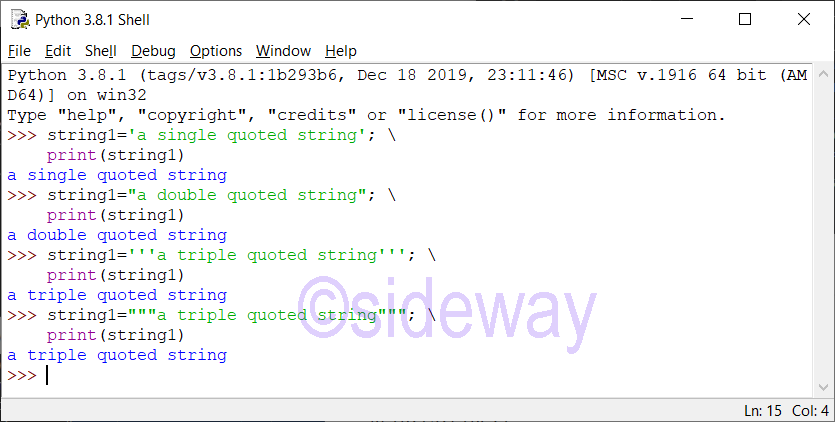
Python String Catalogue
Python strings can be divided into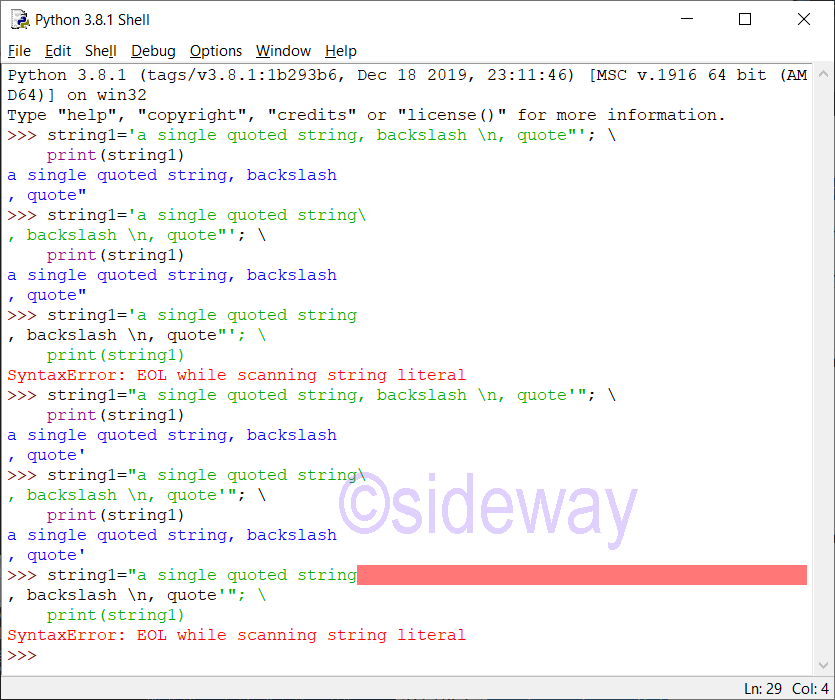
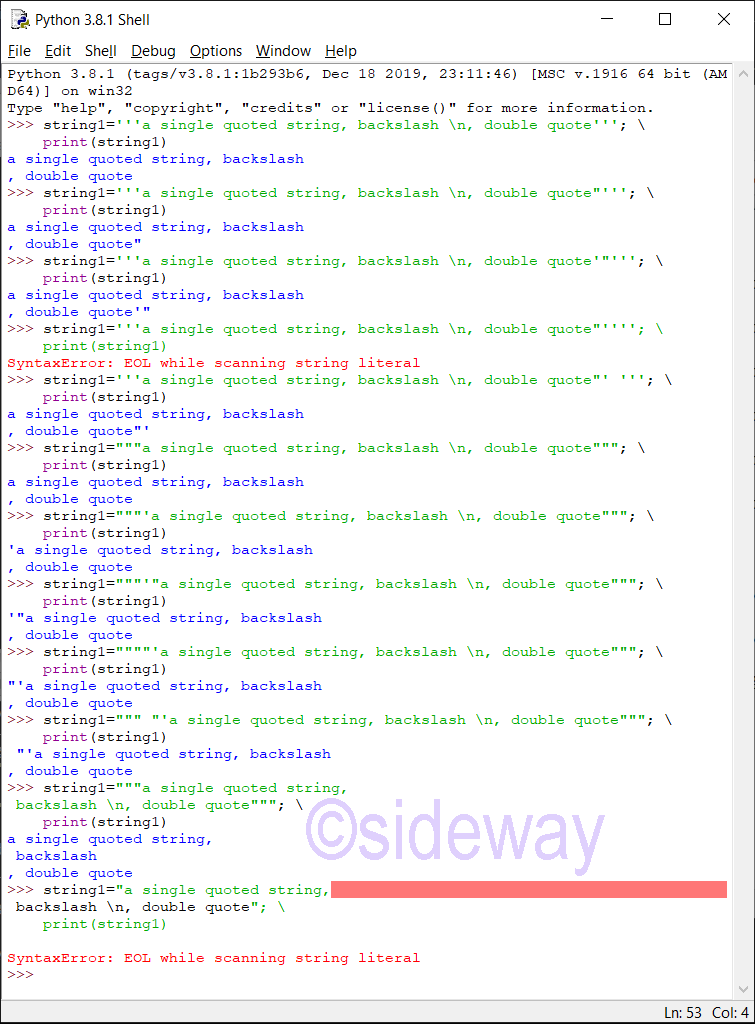
Python String Prefix
Python String Prefix is used to specify the rules to interpret the following string literal. Whitespace is not allowed between the string prefix and the rest of the string literal. The meanings of supported string prefixs are: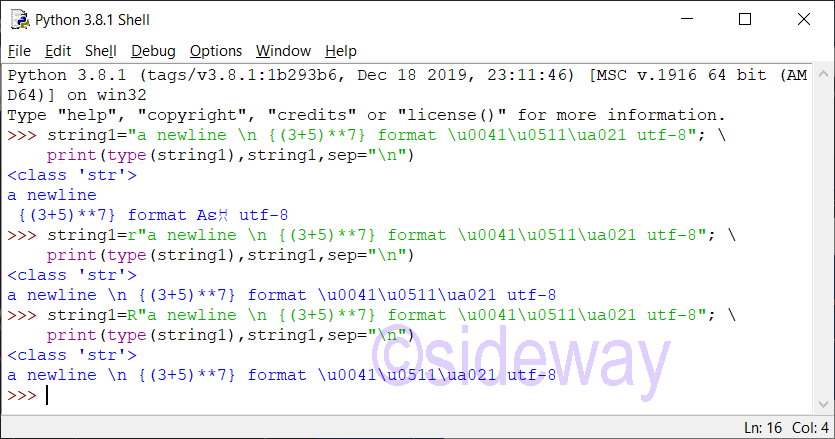
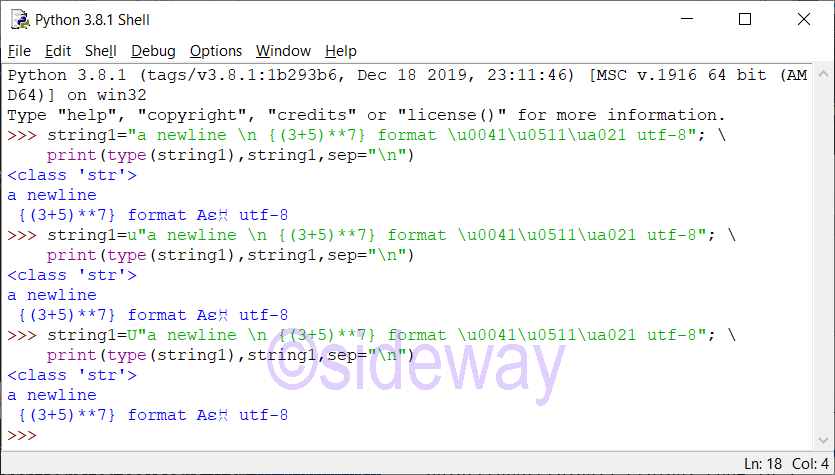
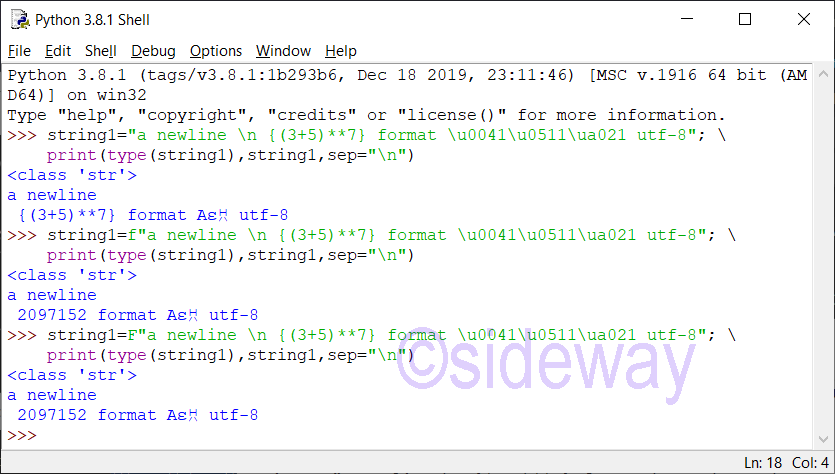
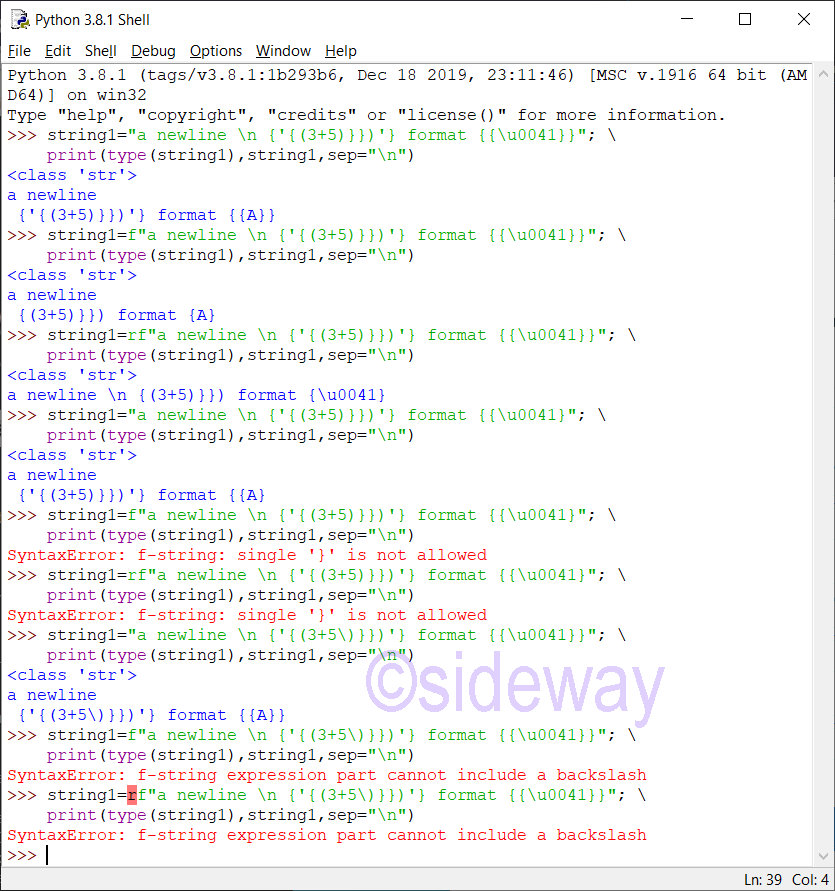 Because backslashes
Because backslashes Python Source Characters
The Python source character set is defined by the encoding declaration. The Python source character set is UTF-8 if no encoding declaration is given in the source file.Escape Sequences Characters
The backslash (\) character is used to escape characters that otherwise have a special meaning, such as newline, backslash itself, or the quote character. The recognized escape sequences are: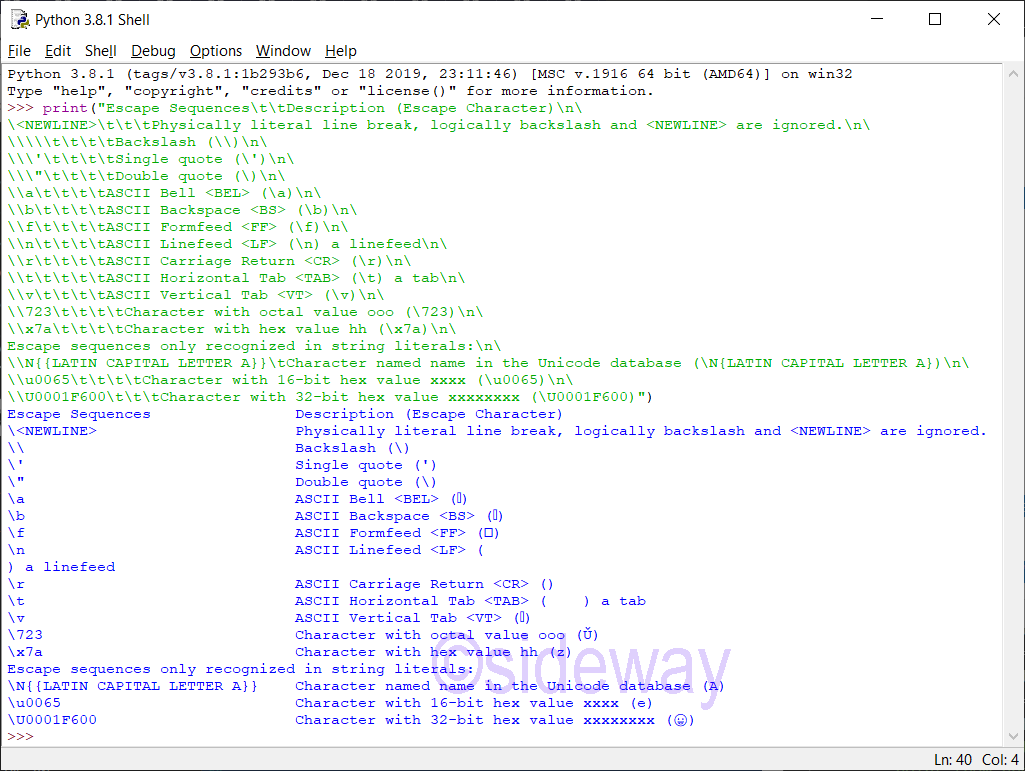
Python Unicode Literial
An unicode string literal is only used to restore support for the unicode legacy literal. The prefixSource and Reference
- https://docs.python.org/3/reference/introduction.html
- https://docs.python.org/3/reference/lexical_analysis.html#literals
- https://docs.python.org/3/reference/expressions.html
- https://docs.python.org/2.0/ref/atom-literals.html
- https://docs.python.org/3/library/stdtypes.html#binary-sequence-types-bytes-bytearray-memoryview
©sideway
ID: 210100002 Last Updated: 1/2/2021 Revision: 0
Latest Updated Links
- Travel Singapore Sight Space(last updated On 12/30/2025)
- Travel Singapore Sight Curiosity Cove(last updated On 12/30/2025)
- Travel Singapore Sight Night Safari(last updated On 12/30/2025)
- Travel Singapore Sight River Wonders(last updated On 12/30/2025)
- Travel Singapore Sight Rainforest Wild ASIA(last updated On 12/30/2025)
- Travel Singapore Sight Singapore Zoo(last updated On 12/30/2025)
- Travel Singapore Sight Mandai(last updated On 12/30/2025)
- Travel Singapore Sight Bird Paradise(last updated On 12/30/2025)
- Travel Singapore Sight AltitudeX(last updated On 12/30/2025)
- Travel Singapore Sight(last updated On 12/6/2025)
- Travel Singapore Rail Network(last updated On 12/5/2025)

 Nu Html Checker
Nu Html Checker  53
53  na
na  na
na
Home 5
Business
Management
HBR 3
Information
Recreation
Hobbies 9
Culture
Chinese 1097
English 339
Travel 31
Reference 79
Hardware 54
Computer
Hardware 259
Software
Application 213
Digitization 37
Latex 52
Manim 205
KB 1
Numeric 19
Programming
Web 289
Unicode 504
HTML 66
CSS 65
SVG 46
ASP.NET 270
OS 431
DeskTop 7
Python 72
Knowledge
Mathematics
Formulas 8
Set 1
Logic 1
Algebra 84
Number Theory 206
Trigonometry 31
Geometry 34
Calculus 67
Engineering
Tables 8
Mechanical
Rigid Bodies
Statics 92
Dynamics 37
Fluid 5
Control
Acoustics 19
Natural Sciences
Matter 1
Electric 27
Biology 1
